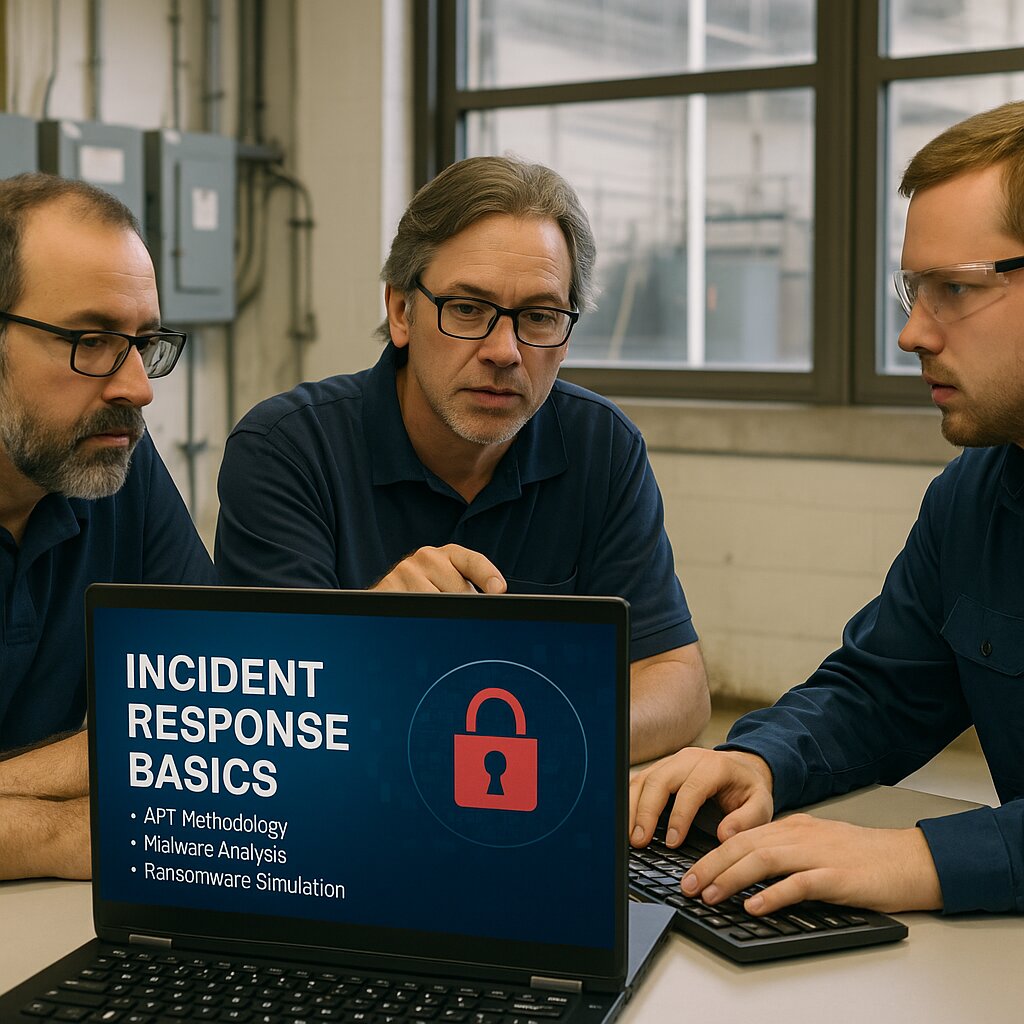Client: Paint and Dye Production Plant
Sector: Chemical-Industrial
Employees: 98
Objective
To enhance the incident response skills of IT and operational teams, reducing reaction times to cyberattacks and improving containment and mitigation capabilities through a structured crisis management approach.
Adopted Solution
- Malware simulations (KillOnce, Qasar)
- Forensic analysis
- Ransomware exercises (Nikto, XSS)
- Case studies (e.g., Lockheed Martin attack)
Incident Response Basics
Course—a three-day intensive program for IT staff and first responders. The training included:
Topics covered: IR team roles, APT methodology, malware handling, digital evidence collection, and timeline creation.
Company Challenge
The plant, with 210 employees in the chemical-industrial sector, proactively addressed cybersecurity to protect its ICS and critical IT infrastructures. The increasing sophistication of threats like ransomware and APTs demanded advanced training to avoid operational disruptions and regulatory issues.
Main Issue Identified
The IT and operational teams lacked the skills to respond quickly and effectively to cyber incidents. Risks included ransomware (Nikto, XSS), advanced malware (KillOnce, Qasar), and data breaches. A lack of expertise in evidence collection and incident handling increased downtime and financial exposure.
Training Intervention
Day 1:
- Roles and responsibilities in IR
- APT methodology & hacker perspective
- Practical sessions with Sysinternals Suite (e.g., Process Explorer, TCP View)
- Malware mitigation exercises
Day 2:
- Digital evidence collection
- Forensic imaging and attack timeline analysis
- Investigations using infected systems
Day 3:
- Simulated ransomware attacks in a virtual arena
- Debriefing and case study: Lockheed Martin
- Red Team vs. Blue Team perspectives
Results Achieved
Quantitative:
- 30% reduction in incident response time (from 36h to 25h)
- 40% improvement in malware detection through new skills
Qualitative:
- 95% of participants felt more confident managing incidents
- Enhanced collaboration between IT and operational teams
- Standardized attack timeline creation improved traceability
Conclusion
The training significantly improved the cybersecurity resilience of the plant, aligning it with industrial best practices. It lowered operational risks, enhanced containment capacity, and boosted stakeholder confidence. The proactive approach strengthened the company’s security posture, making it a benchmark in the chemical-industrial sector.

